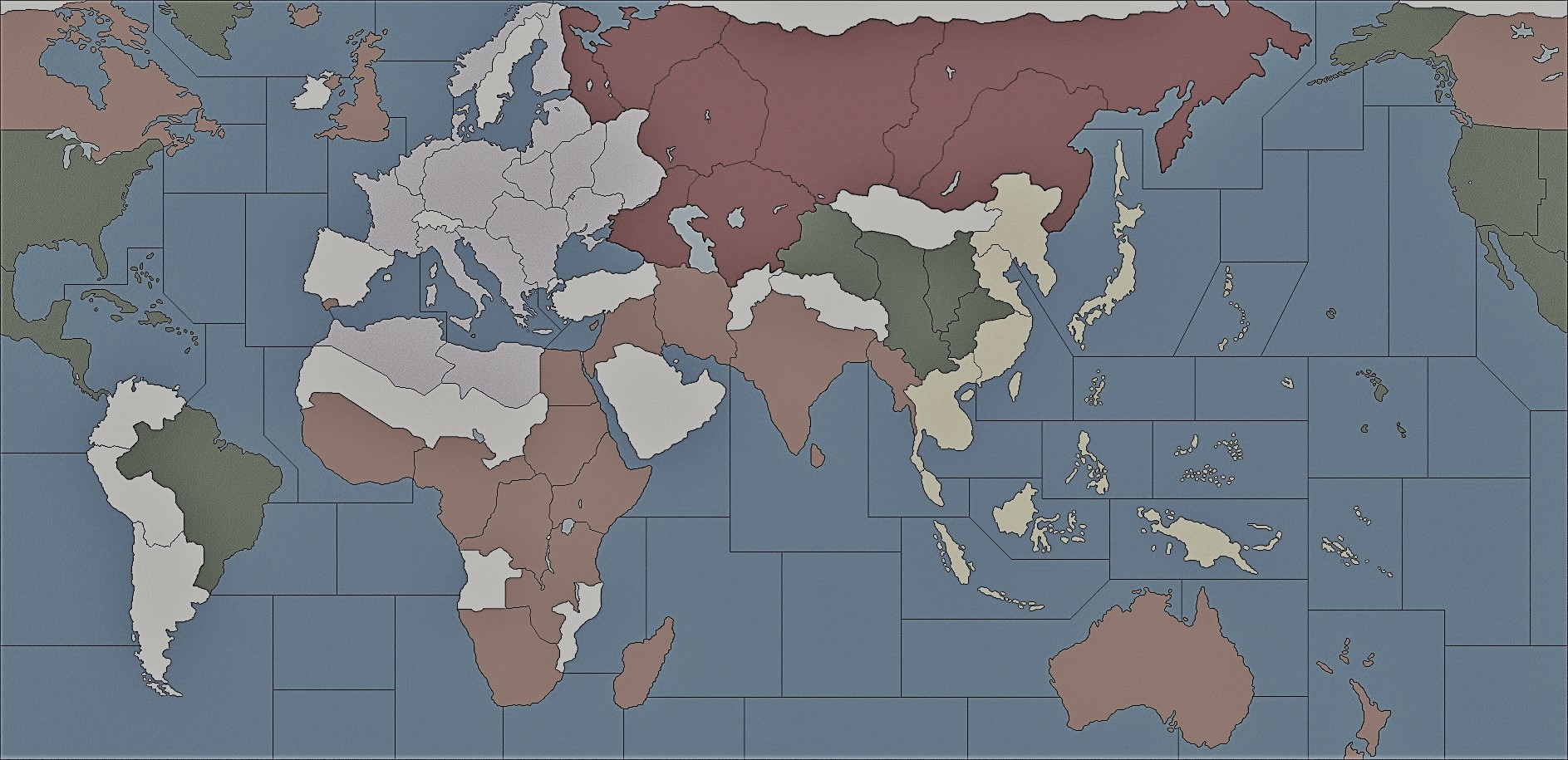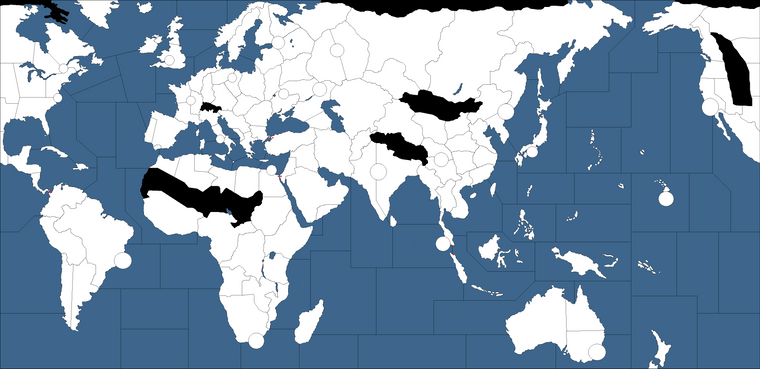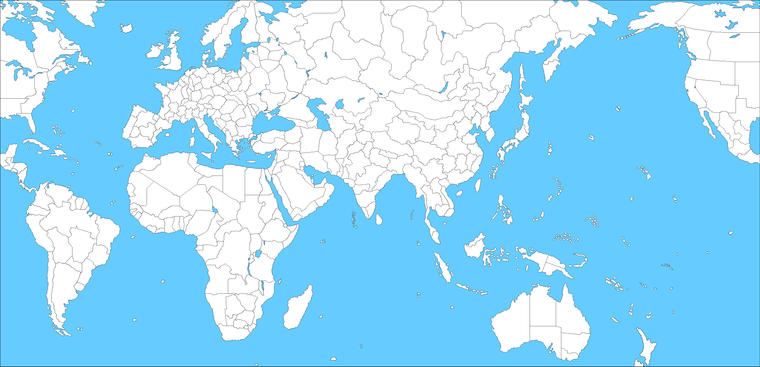G40 DELTA HOUSE RULES (2nd Edition)
The Research and Development phase from the regular A&A G40 2nd Edition rules has now been removed and replaced by the Fortunes of War phase. This new phase and other new elements listed below work together to create G40 Delta:
1. The “Fortunes of War phase” is when most of the new activity happens.
2. “Strategic Advantages” give nations special abilities that improve their overall war effort.
3. “Progressive Advantages” are additional abilities that must be earned over the course of a game.
4. “Strategic Objectives” are either new or modified National objectives.
5. “City Objectives” are bonus rewards in addition to the Strategic Objectives
6, “Optional Rules” are a mix of rule modifications to help balance the game on different levels.
THE FORTUNES OF WAR PHASE
The “Fortunes of War” phase (FOW), happens once each game round just before Germany’s turn sequence. During each FOW phase, nations choose strategic advantages and make progress rolls for progressive advantages.
STRATEGIC ADVANTAGES
During each FOW phase up to R10, a predetermined nation will automatically gain a “Strategic Advantage”, but may only choose from the 2 advantages available at that time. Strategic advantages become effective immediately once chosen, and nations will benefit from their advantages for the remainder of the game. However, once an advantage has been passed, it will never again become available.
For example: during R1, every nation except China will choose between Airborne Assault Troops and War Time Production, also, eligible nations will make their first progress roll. During R2 FOW phase , only Germany may choose between Enigma and Blitzkrieg, however, eligible nations will make their second progress roll… and so forth.
Some advantages become void when that nation losses their capital city. Advantages that become lost due to their capital being captured are noted in the advantage description, and they become reinstated once the capital city is liberated, all other advantages remain unaffected when the capital is in enemy hands.
Here are the available strategic advantages, and the game rounds (R#) they are eligible to be chosen in:
R1 - Germany / UK / Russia / Japan / USA / Italy / ANZAC / France
1A - Airborne Assault Troops
Up to 2 infantry units from a friendly operational airbase may attack an enemy territory up to 3 spaces away, provided that territory is also being attacked by land units coming from an adjacent territory, or sea zone.
Airborne Assault troops may not retreat once deployed, or be supported by artillery units during the resolve combat phase. The territory under attack must contain at least 1 enemy land unit, and the attacking force must have air superiority (meaning they must have equal to, or more air units attacking than the enemy has defending).
or
1B - War Time Production (void with loss of capital city)
Major ICs may now produce a maximum of 12 units, and minor ICs may now produce a maximum of 4. The maximum damage that can be applied to these facilities has not changed, however, ICs must be fully operational (zero damage) in order to produce the extra unit/s.
R2 - Germany
2A - Enigma
German submarine units now attack at 3 or less, and receive 3 dice each when disrupting convoys.
or
2B - Blitzkrieg
Each German mechanized infantry unit may now blitz alone, and transport an artillery unit up to 2 spaces during their combat movement, or non-combat movement phase.
R3 - United Kingdom
3A - Radar (void with the loss of capital city)
All British interceptors, AA artillery units, and built in AA guns now defend @2 or less. Also, operational airbases may now scramble up to 4 fighters to defend adjacent sea zones.
or
3B - Commonwealth Aid
All units (except infantry) produced by original minor ICs in Canada, and South Africa are now 1 IPC cheaper.
R4 - United States
4A - War Bonds Campaign (void with loss of capital city)
America now rolls 2 dice every round during their collect income phase, and may collect that amount in additional IPCs +1.
or
4B - Uncle Sam Campaign (void with loss of capital city)
America now receives 3 free infantry units every turn during their place new units phase (1 in Eastern United States, 1 in Central United States, and 1 in Western United States).
R5 - Japan
5A - Long Lance Torpedos
All hits from attacking Japanese destroyers must be applied to enemy capital ships first.
or
5B - Tokyo Express
Japanese destroyers may transport one infantry unit each provided they are offloaded on to Japanese controlled Islands. Also, all Japanese infantry units on Islands now defend @3 or less.
R6 - Soviet Union
6A - Tankograd
All Russian ICs now have a non-combat movement value of 1, and may now produce tanks for 1 IPC less.
Russian ICs that have made a non combat movement may still build units during their place new units phase. Also, Russian ICs must be fully operational in order to move, and two ICs may never occupy one territory at the same time.
or
6B - Trans-Siberian Railway (void with loss of capital city)
Any number of Russian infantry units, artillery units, and/or AA artillery units may now move from Russia to Novosibirsk, Timguska, Yenisey, or Yakut S.S.R within a single non-combat movement, provided the line to their destination is not broken, the destination is under Russian control, and the movement originated from Moscow.
R7 - United States
7A - Super Fortresses
When American strategic bombers attack (weather in a battle or SBR), they now receive 2 dice each and the attacker may select the best result. Also, American strategic bombers now hit at 2 or less when defending against interceptors, and are now immune to built in AA guns during SBRs.
or
7B - Essex Class Carriers
All American aircraft carriers now have an attack value @2, and their maximum capacity has now increased to 3 air units.
R8 - Germany
8A - Dora
Germany may bombard an enemy territory or hostile sea zone during each combat round @3 or less, provided the battle contains at least 1 German unit, and is adjacent to a German controlled territory in Europe.
or
8B - V-Rockets
Germany may launch a rocket attack from each operational airbase under German control, towards an enemy facility up to 4 spaces away. Germany rolls 1 die per rocket causing that amount of damage to the targeted facility +1, provided it can survive all SBR defences (interceptors and built in AA guns).
R9 - Japan
9A - Banzai Attack
For the 1st combat round only, all Japanese Infantry units attack @2 or less, and @3 or less when supported by artillery (mechanized infantry units non applicable).
or
9B - Super Submarines
Japanese Submarines perform as normal, however, they may now carry 1 fighter each (all aircraft carrier rules apply, however, tactical bombers may not be used, and super submarines do not block enemy naval movements).
R10 - Germany / UK / Russia / Japan / USA / Italy / ANZAC / France
10A - Long Range Aircraft
The movement value of all air units has now increased by 1.
or
10B - Modernized Shipyards (void with loss of capital city)
Sea units are now cheaper to build:
Battleship = $17
Aircraft Carrier = $13
Cruiser = $9
Destroyer = $7
Transport = $6
Submarine = $5
PROGRESSIVE ADVANTAGES
During each Fortunes of War Phase, all eligible nations will make a progress roll using 1 die. Each nation will add the results from their progress rolls during each FOW phase throughout the game until they reach a total of 25 progress points. Once a nation has accumulated 25 progress points, their designated “Progressive Advantage” will immediately become available (or effective).
To track this progress, players shall place their progressive advantage card face up on the table, and than stack chips on it in the amount of progress points achieved throughout the game rounds. Nations may not make progressive rolls during FOW phases in which their capital is under enemy control.
The progressive advantages “Russian Winter”, “Manhattan Project”, “Flying Tigers” and “Kamikaze Honor” are advantages that have a special one time effect, therefore, they will become effective again if the Soviet Union, United States, China, and Japan can reach 25 progress points a second time (progress points gained from one roll exceeding 25 will carry over and count towards the next 25).
Here are the Progressive Advantages available, and the eligible nations assigned to them:
Germany
Jet Fighters
All German fighters now attack at 4 or less, they also intercept and escort @2 or less.
Soviet Union
Russian Winter
Russia rolls 2 dice, and Germany must remove from original Russian territories that many infantry units +1.
Japan
Kamikaze Honor
All Kamikaze tokens are reloaded to 6, and now hit @3 or less. Also, Japan may now use kamikazes to attack in designated kamikaze sea zones as well as defend.
United States
Manhattan Project
America chooses an enemy capital and may then roll 3 dice to damage the IC, 2 dice to remove IPCs, and 1 dice to destroy units on that territory (enemy chooses which casualties to remove).
China
Flying Tigers
China will receive one free fighter during their next place new units phase, but only if they control at least 1 of their original territories.
United Kingdom
Around the Clock Bombing
All British strategic bombers departing from an operational airbase may now conduct SBRs on America’s turn as well as their own.
Italy
Self-Propelled Guns
Each Italian artillery unit may now support up to 2 attacking infantry and/or Mechanized infantry units
France
Viva La France (control of Paris is not required to gain this advantage)
During each place new units phase, France may build 2 free infantry units on any original French territory or territories they still control, or original French territory or territories occupied by their Allies.
STRATEGIC OBJECTIVES
Strategic Objectives are a modification, or a replacement of the original national objectives in the regular rules. Strategic objectives rewarding nations for owning all their original territories, are specific to the roundels printed on each territory. Also, the Japan strategic objective “Trade With America” is the only objective that is collected during a nation’s peace time.
Germany
Deutschland
$5 - Germany controls all their original territories
Caucasus Oil Fields
$5 - An Axis power controls Caucasus
Africa Korps
$5 - Germany has 3 or more land units in Africa.
Soviet Union (When at war with Germany)
Motherland
$5 - Russia controls all their original territories
Lend Lease Act
$5 - The Allied powers control Archangel and there are no axis warships is sea zone #125
Communist Pride
$5 - There are no Allied units on original Russian territories
United States
The Far North
$5 - US controls Alaska and the Aleutian Islands
North America
$5 - US controls Western United States, Central United States, and Eastern United States
Central America
$5 - US controls Mexico, Southeast Mexico, Central America, and West Indies
The Outer Perimeter
$5 - US controls Midway, Wake Island, Hawaiian Islands, Johnston Island, and Line Island
The South Pacific
$5 - The Allied powers control The Philippines, Borneo, Sumatra, Java, and Celebes
Japan
Trade With USA
$5 - Japan has not attacked FIC, and is not at war with the Pacific Allies
Chinese Capitulation
$5 - Japan controls all Chinese original territories
The South Pacific
$5 - Japan controls the Philippines, Borneo, Sumatra, Java, and Celebes
China
Chinese Domination
$5 - China controls all their original territories
(China may now attack Korea, and may also liberate FIC)
The Burma Road
$5 - The Allied powers control the Burma road
(China may now produce artillery units and tanks)
United Kingdom
British Empire
$5 - The United Kingdom controls London, Calcutta, Quebec, and South Africa
The Burma Road
$5 - The Allied powers control the Burma road
Operation Ultra
$5 - There are no Axis submarine units in the Atlantic
Italy
The Mediterranean Coast
$5 - The Axis powers control 3 of the 4 following territories, Gibraltar, Southern France, Greece, and/or Egypt
The Mediterranean Sea
$5 - There are no Allied warships in the Mediterranean
The Middle East
$5 - Italy controls Iraq, northwest Persia, and Persia
North Africa
$5 - The Axis powers control 6 of the 7 following territiries: Morocco, Algeria, Tunisia, Libya, Tobruk, Alexandria, and/or Egypt
ANZAC
Pacific Gateway
$5 - ANZAC controls all their original territories
The South Pacific
$5 - The Allied powers control the Philippines, Borneo, Sumatra, Java, and Celebes
Expeditionary Force
$5 - The Allied powers control Malaya, and Egypt
CITY OBJECTIVES
A city is considered active once it has been captured for the first time, and will remain active for the rest of the game no matter which nation controls it. Once activated, capital cities are each worth a $5 city objective bonus, and non-capital cities are each worth a $2 city objective bonus. Shanghai is the only city that begins the game active, which will give Japan a city objective bonus of $2 to start the game. Capital cities, and non-capital cities that have never been captured at least once, are inactive and have zero city objective value.
Axis Capital Cities
Berlin
Rome
Tokyo
Axis Non-Capital Cities
Warsaw
Allied Capital Cities
Washington
London
Paris
Moscow
Sydney
Allied Non-Capital Cities
Ottawa
Cairo
Leningrad
Stalingrad
Shanghai
Hong Kong
Calcutta
Manila
Honolulu
San Francisco
OPTIONAL RULES
Base Command
Strategic Bombers conducting SBRs only receive a +2 damage bonus if they have departed from an operational airbase.
Deep Decent
Air units may fire upon submarines during the 1st combat round only. Attacking or defending warships may continue to target enemy submarines, however, submarines may not be used as casualties from hits by air units after round 1.
Limited Action
Damaged battleships may no longer bombard during an amphibious assault.
BCATP “The Plan”
A British fighter has been added to the initial set up in Ontario.
War Economy
The British economy is no longer split between London and Calcutta, instead, the United Kingdom will now collect one income for all territories owned on the map with London as it’s capital. All IPCs must be relinquished each time an enemy power captures London, however, Calcutta is no longer a capital city, and the major IC on India has been downgraded to a minor. This optional rule is highly suggested due to the strategic objective card “British Empire”.
Political Sovereignty
A change in the neutrality status of Strict Neutral territories in South America has no influence over Strict Neutral territories anywhere else, and vise versa.
Global Victory
The following victory condition has been added to the regular rules: The first side to claim a combined 12 victory cities including 1 enemy capital city will win the game.
Mutual Allies
In the event of a 6 player game, the Soviet Union will play China, the United States will play ANZAC, and the United Kingdom will play France.














